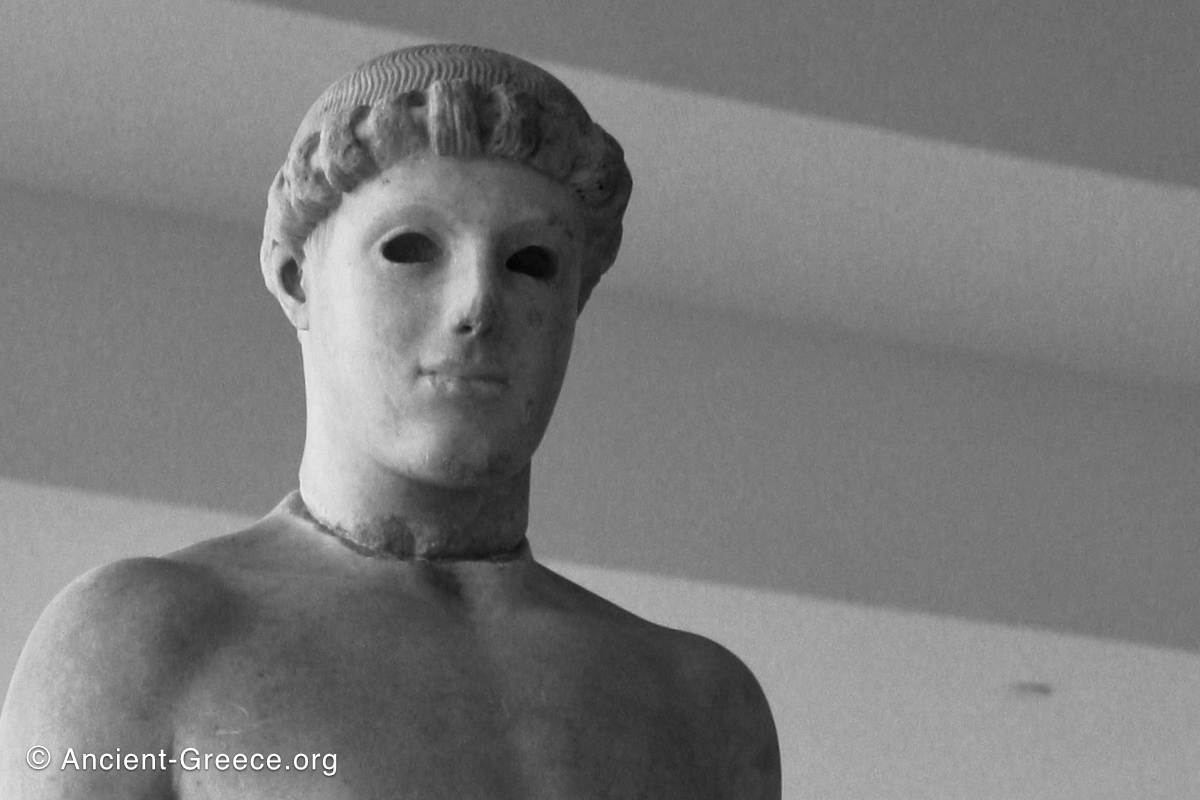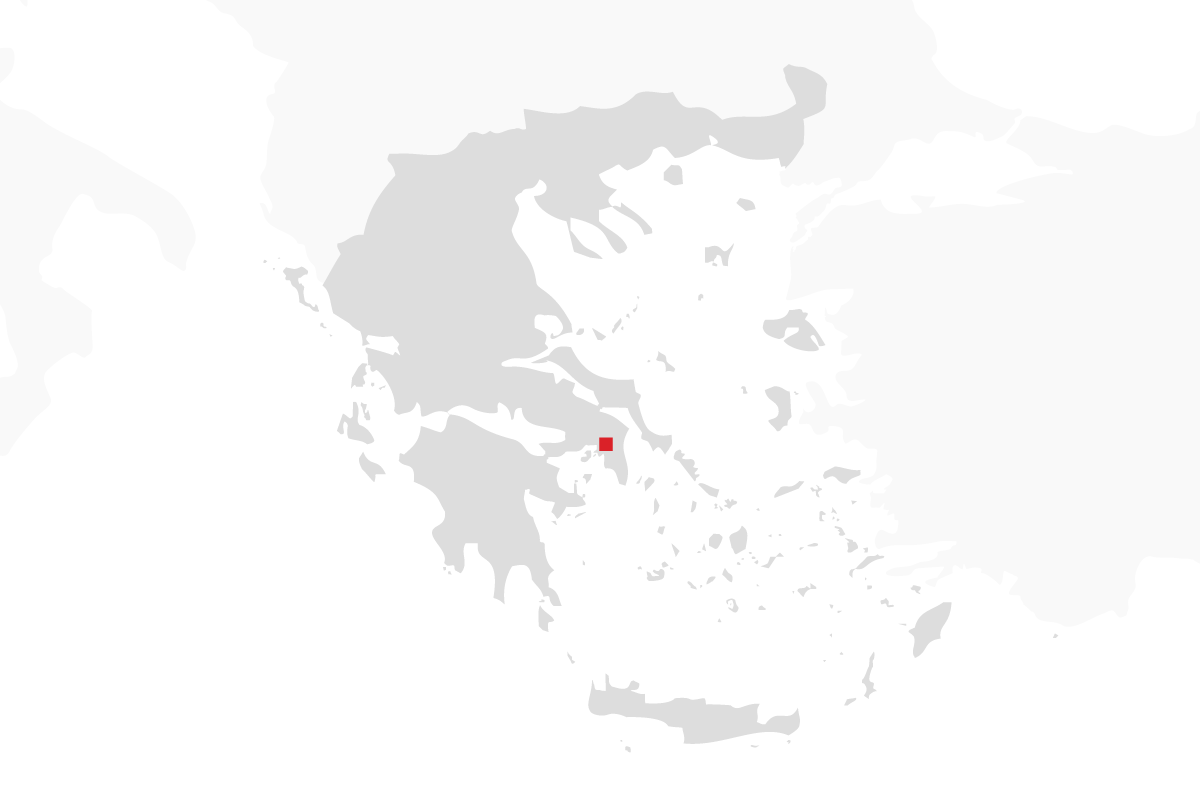
On this page:
The Kritios Boy (or Kritian Boy). Marble. 1.17 m (3 ft 10 in) tall. Believed to be the creation of Kritios, the teacher of Myron. Circa 480 BCE. It was found in two parts at the Acropolis of Athens, Greece, in 1865 and 1888
The Kritios boy belongs to the Late Archaic period and is considered the precursor to the later classical sculptures of athletes.
Transition from Archaic to Classical Sculpture
The Kritios boy sculpture is considered to be a (known) transition point from Archaic “kouros-type” to the Classical “athlete-type” statues.
With the Kritios Boy the Greek artist describes the human body with a greater degree of realism than previous known sculptures, understanding how the underlying system of a rigid skeletal structure, soft muscles, and flexible skin interact to affect the outer appearance.
The statue supports its body on one leg, the left, while the right one is bent at the knee in a relaxing state. This stance forces a chain of anatomical events as the pelvis is pushed diagonally upwards on the left side, the right hip relaxes, the spine acquires an “S” curve, and the shoulder line dips on the left to counteract the action of the pelvis (contra-posto).
The Kritios Boy exhibits a number of other critical innovations that distinguish it from the Archaic Kouroi statues that paved its way.
The muscular and skeletal structure are depicted with unforced life-like accuracy, with the rib cage naturally expanded as if in the act of breathing, with a relaxed attitude and hips which are distinctly narrower.
As a final forebear of the classical period, the “smile” of Archaic statues has been completely replaced by the accurate rendering of the lips and the austere expression that characterized the transitional, or “Severe” period from the Archaic to the Classical era.
Here is a progression of characteristic Archaic sculptures that illustrates transition to Classical sculpture:




Note the refinement of the surface details. Pure geometric lines are still visible in the earlier Cleovis and Biton statues, while the anatomy is smoothed in the Kritios Boy.
Perhaps this practical reason was why the facial expression of statues appears more solemn toward the end of the Archaic era.
Another change comes in the development of a more natural standing pose. Earlier statues appear very static, rooted to their spot as if standing in attention, but later statues like Aristodikos Kouros and Kritios Boy seem about ready to step forward.
A more accurate life-likeness is achieved in later statues with the expansion of the chest as if inflated with air or about to speak.
Related Pages



